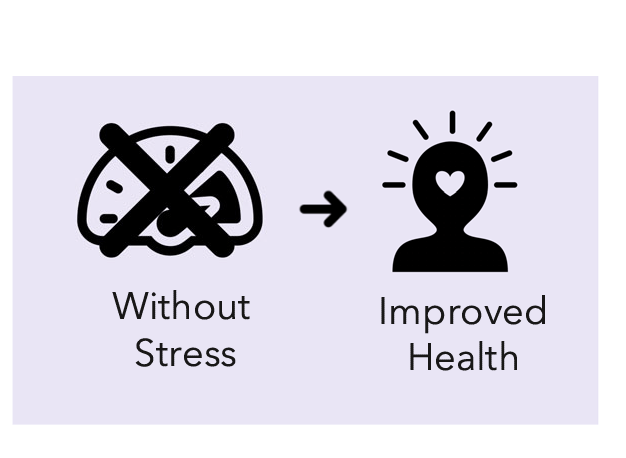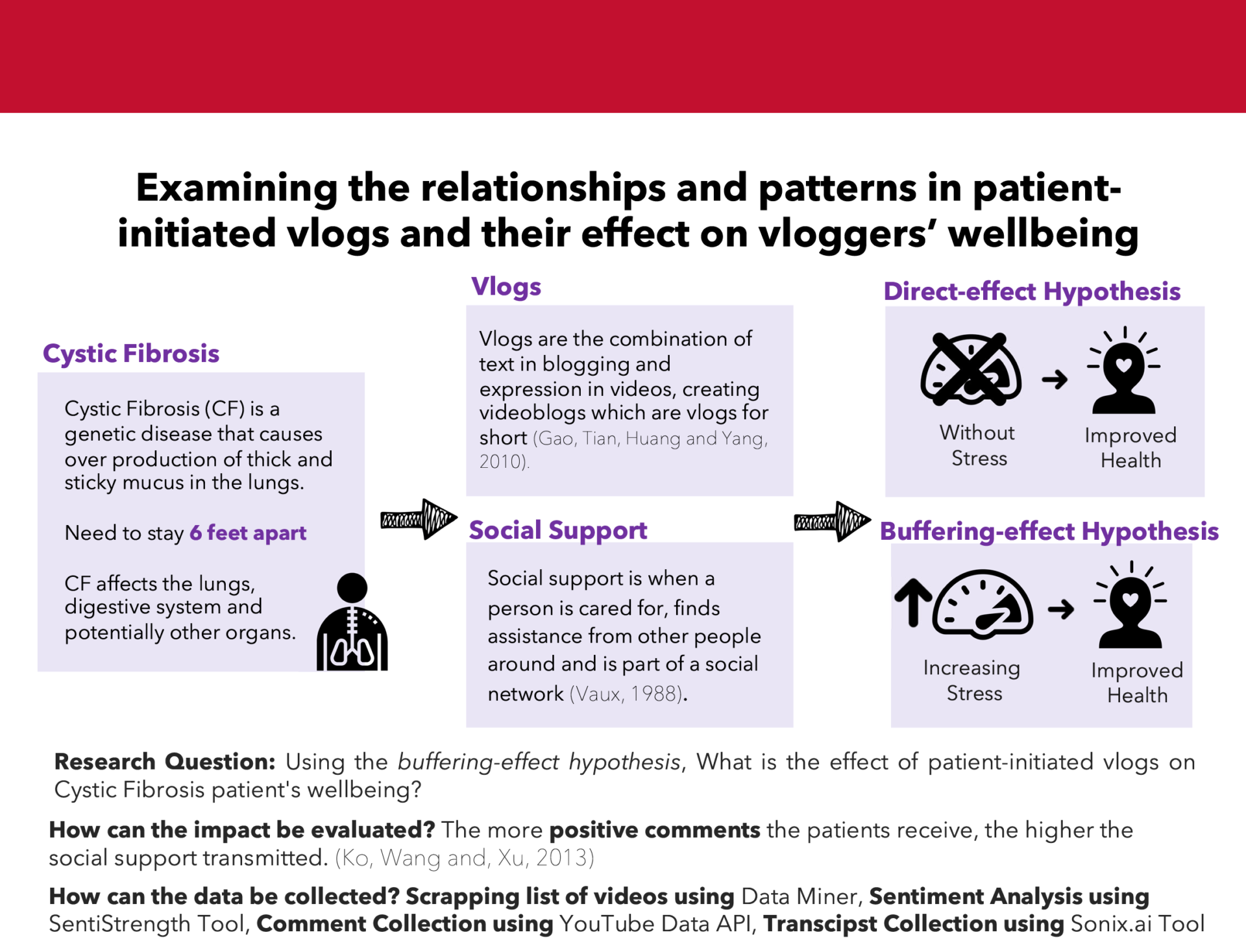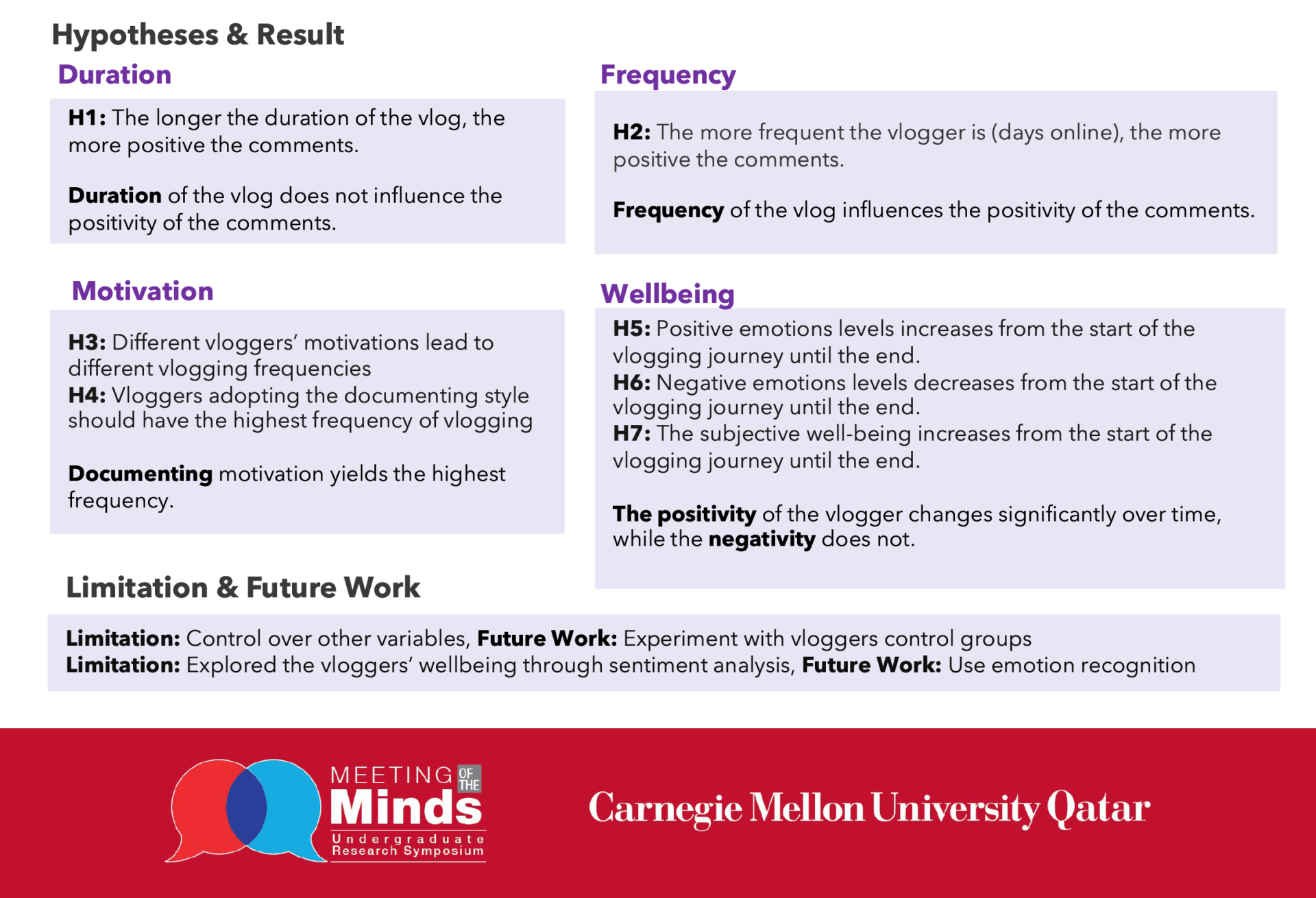Vlogging (video blogging) is a highly utilized activity by users of video posting platforms. People of different backgrounds, ethnicities, ages, or interests have been vlogging for different purposes. One of the topics that Vloggers vlog about is healthcare. People with various medical conditions revert to vlogging for a variety of reasons. In this study, we are interested in vloggers who are patients with cystic fibrosis (CF). CF is a genetic disease that causes the production of thick and sticky mucus in the lungs. The disease does not only affect the lungs, but also the digestive system and possibly other organs. This disease is progressive and requires daily care and attention. The CF patients are advised to stay 6 feet apart from other patients due to their high sensitivity to infections. For this reason, they often may not enjoy physical social support. Thus, some use platforms such as YouTube to document, inspire, encourage, or update their viewers about their disease and to receive social support. This study is focusing on finding the vlog characteristics that can help increase the impact of social support received. Some of the characteristics that are considered are the duration of the vlog, the frequency of vlogging, and their relationship with the positivity of the comments posted by viewers. The assumption is that the more positive comments the patients receive, the higher the impact of the social support. Thirty-five vloggers, approximately 23,000 comments, and 180 video transcripts. The data was analyzed using SentiStrength, which is a sentiment analysis tool. Each comment and transcript were given a sentiment, which is either neutral, positive, or negative. The analysis was done and the results of our study show that the duration is an insignificant characteristic while the frequency significantly affects the positivity of the comments. The study also focuses on finding the motivation of the vlogger that leads to the highest frequency and potentially to the highest percentage of positive comments. It was found that vlogging for documenting purposes yields the highest frequency. Following that is the updating motivation where the vlogger vlogs to update their views about their life. Finally, vlogging for the entertainment and for responding to others yielded the least amount of frequency. Finally, the study explores the potential improvement in the vlogger’s subjective wellbeing through tracking their emotional progress from three points in their vlogging journey, the first vlog, a vlog in the middle, and the last vlog they posted. The results showed that the positivity of the vlogger increases significantly while the negativity does not. Thus, the results are not sufficient to conclude an increase in wellbeing.




